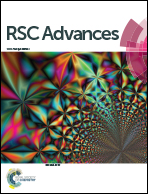Recent advances in liquid hydrosilane-mediated catalytic N-formylation of amines with CO2
Abstract
Carbon dioxide is an ideal raw material for the synthesis of complex organic compounds because of its rich, non-toxic, and good physical properties. It is of great significance to transform CO2 into valuable fine chemicals and develop a green sustainable cycle of carbon surplus. Based on hydrosilane as a reducing agent, this work summarizes the recent applications of reductive amidation of CO2 using different catalysts such as organocatalysts, ionic liquids (ILs), salts, transition metal complexes, and solvents. The main factors affecting the reductive amidation of CO2 and the possible reaction mechanism are discussed. Moreover, the future orientation and catalytic systems of the formylation of amines with CO2 and hydrosilane are prospected.

- This article is part of the themed collection: 2020 Reviews in RSC Advances


 Please wait while we load your content...
Please wait while we load your content...